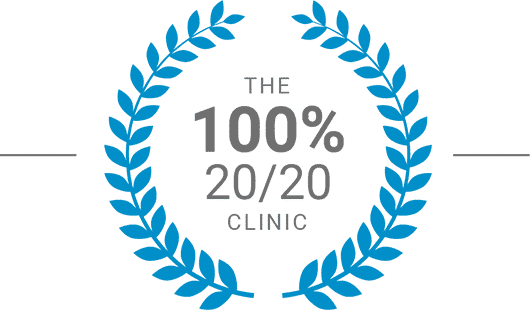Book Your Free Consultation
Mr David Allamby
MD, FRCOphth, FRCS
Are you considering Refractive Lens Exchange (RLE) surgery as a solution to correct your vision and reduce your dependence on glasses or contact lenses?
With such a sensitive and vital area of the body being operated on, having concerns is understandable. You may even be asking yourself, is refractive lens exchange surgery safe?
This groundbreaking procedure has helped countless individuals achieve clearer vision, but it's essential to understand both the safety and potential risks associated with RLE.
In this blog post, we'll explore the safety of RLE surgery and the risks you should be aware of when considering this vision correction option.
RLE, also known as Lens Replacement Surgery or Clear Lens Extraction, is a surgical procedure used to treat common vision problems like presbyopia, hyperopia (farsightedness), and myopia (nearsightedness).
It's similar to cataract surgery. With RLE, the lens is transparent, i.e., no cloudy cataract (when the clear natural lens becomes opaque or clouded).
The natural lens is replaced with an artificial intraocular lens (IOL) in both procedures. RLE is done to correct refractive errors. Cataract surgery removes the cloudy blockage to light but will also be used to simultaneously correct any need for glasses.
RLE is considered a safe and well-established procedure. Like any surgical intervention, it carries some level of risk, but the safety of RLE primarily depends on several factors, including the experience of your surgeon, the technology used, and your individual health and eye condition.
Here's why RLE is generally regarded as safe:
While RLE is generally safe, it's essential to be aware of potential risks:
Ultimately, the decision to undergo RLE should be made in consultation with your surgeon. The benefits of clearer vision and reduced dependence on glasses or contacts are substantial, but weighing them against the potential risks is vital.
Your surgeon will carefully evaluate your suitability for RLE, discuss the associated risks, and help you decide about your vision correction journey.
Modern advancements in eye surgery technology have further improved the safety and precision of RLE. High-quality IOLs, precise measurement tools, and advanced laser systems contribute to a successful outcome.
Before your surgery, we will conduct a comprehensive evaluation to assess your suitability for RLE. This assessment includes a thorough examination of your eye health and a review of your medical history.
After the surgery, we will ask you to follow post-op treatment regimen and attend post-op appointments. This is essential to aid your healing and to spot any potential complications, with free coverage given to you for the first decade after surgery.
Understanding the safety and risks of RLE is crucial for anyone considering this procedure, ensuring they can make informed choices about their eye health and vision correction goals.
More information about RLE surgery:
Book a FREE* Consultation
To get a better idea of how we can help you, and also the different types of services we offer, book a consultation now.

100% 20/20 vision
Focus Clinic has a remarkable 100% success rate for 20/20 vision. We know of no other clinic that has matched these results. There is a big difference between, for example, 98% and 100% success, especially if you are in the 2%.

10 year guarantee
Your 10 Year Guarantee means you can return at any time if you have additional questions on the quality of your vision. If you have distance vision correction for short-sight then any repeat laser eye treatments to correct a return of myopia in the first 10 years are included free of charge.*

Most trusted eye treatment clinic
We have the highest trust rating of any ‘eye treatment’ rated clinic, according to independent review site TrustPilot. With an outstanding 9.9 out of 10, when it comes to your eyes, choose the clinic that actual patients trust the most.
*Terms and conditions apply, excludes any age-related changes and conditions unrelated to the primary treatment